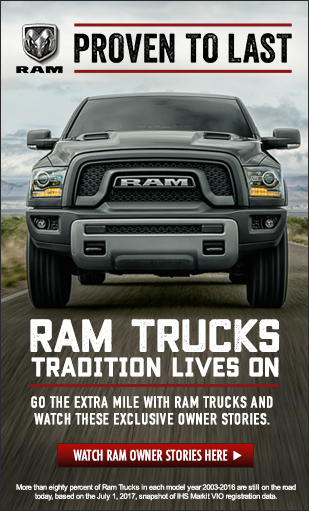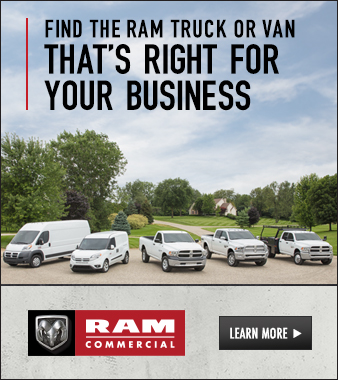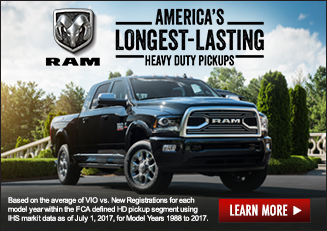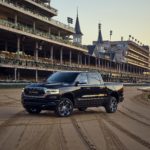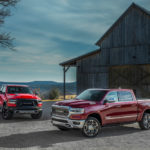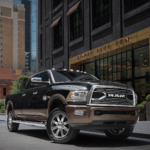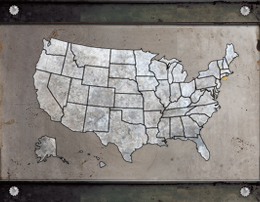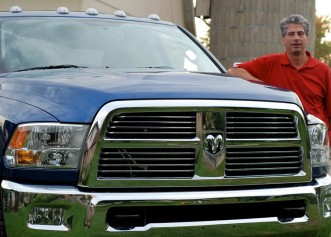 24 years ago and fresh out of college, budding engineer and self-proclaimed pickup enthusiast Kevin Mets joined the ranks at Chrysler as an electrical engineer. Since then, he has worked on countless programs in engineering and manufacturing. In his most recent capacity, he’s been helping the Ram brand build both its legendary history and indomitable product portfolio. The 2010 Ram Heavy Duty is one of Mets’ most recent success stories, and we’ve been dying to pick his brain about it. Last week, Kevin agreed to sit down with us and discuss Ram’s newest workhorse, the 2010 Ram HD.
24 years ago and fresh out of college, budding engineer and self-proclaimed pickup enthusiast Kevin Mets joined the ranks at Chrysler as an electrical engineer. Since then, he has worked on countless programs in engineering and manufacturing. In his most recent capacity, he’s been helping the Ram brand build both its legendary history and indomitable product portfolio. The 2010 Ram Heavy Duty is one of Mets’ most recent success stories, and we’ve been dying to pick his brain about it. Last week, Kevin agreed to sit down with us and discuss Ram’s newest workhorse, the 2010 Ram HD.
Hit the jump to read Kevin’s exclusive insight on lower emissions, smoother rides, and the inspiration behind it all.
RZ: What are a couple details of the new trucks (the 2010 Ram 2500 and 3500 Heavy Duty and the 2010 1500) that consumers might not notice but are a really big deal?
KM: Relative to HD (2500 and 3500), which is my area of expertise, the 2010 model year marks the first time where the Heavy Duty appearance is different than the Light Duty. Starting with front end, the hood is three inches taller and the grill is that much larger. This gives the truck a massive heavy duty look, but also provides a functional benefit as well. That large grille gives us the ability to provide greater cooling for that large diesel engine that we have, the 6.7-liter Cummins Turbo Diesel. When you look around the back of a dually, the box-side outers are one-piece stamping. The breathtaking sweeping appearance is integrated into the design as opposed to the traditional add-on plastic flares.
There are other things we’ve done that people can’t see, but can feel. We have improved the ride on all of our models with the introduction of hydro mounts. The traditional mount between the frame and the body is a rubber isolator, like a hockey puck. We now have hydro mounts which are liquid-filled and are tuned to damp out road inputs, especially where frame beaming occurs. It’s a feature that we were first to market with.
RZ: Could you talk about the advantages of the Diesel Integrated Exhaust brake over anything the competition is offering?
KM: Well let me first tell you how ours works and why it works so well. The Cummins 6.7L has a variable geometry turbo charger that has the ability to close off the exhaust side of the turbo creating back pressure into the engine. That backpressure slows the engine and ultimately the vehicle without using the foundation brakes. Big rigs actually depend on engine braking as their primary method of maintaining a safe downhill speed. If they don’t, their foundation brakes can overheat and cause brake fade. Using engine braking prolongs the foundation brake life. I was just recently out west towing with our trucks fully loaded up and down large grades. Our exhaust brake works so well that I found myself actually throttling in to go downhill. I rarely used my foundation brakes.
RZ: Changing gears slightly (no bad pun intended) could you talk a little bit about diesel exhaust fluid and the advantages of not having to use it?
KM: Sure. DEF is a fluid that reacts inside the SRC (Selective Reductive Catalyst) which basically converts NOX into nitrogen and water. The customer has to add this fluid into their urea tanks in order for their vehicle to meet emission standards. The Cummins Turbo Diesel uses a NOX trap and Exhaust Gas Recirculation, so we’re able to meet the emissions standards for 2010 without using urea. The benefits: First, it’s been in the market three years plus and is proven. Second, the customer doesn’t have to worry about purchasing and filling their vehicle with DEF.
RZ: So what were some of the performance targets for the HEMI for this year?
KM: When it comes to the 5.7-liter HEMI, we certainly want to build on its legendary history. We made some significant improvements in 2009 that may have gone unnoticed on the HD truck. We’ve improved fuel economy by five percent with the introduction of variable valve timing (VVT) and an active intake system. That engine just keeps getting better for us. In recent third-party instrumented testing, our HEMI performed extremely well against the competition’s offerings. It was an awesome testimony given the fact the HEMI went against the newer engines from the competition and was the best performing – not only from a performance perspective, but in fuel economy too.
Now the diesel, where do I start? The Cummins 6.7 is the latest in a long line of the legendary Cummins ISB engines. The 6.7L is rated at 350 bhp and 650 lb.- ft. of torque which kicks in at a very low 1,500 RPM. The high-pressure common rail injection delivers fuel precisely throughout the combustion event, variable geometry turbo produces greater turbo boost at low RPMs and a 350,000-mile-to-major-overhaul schedule, no wonder this engine has a following in the market.
We offer a very solid, industry proven, six-speed automatic transmission and a class-exclusive manual transmission behind the Cummins. The tow/haul mode on the automatic actually senses the vehicle coast-down rate and will downshift if need be, so you’ll get even more active powertrain braking. A simple half-second tap on the brake pedal starts the downshifting strategy as well.
Take the Cummins engine with the diesel exhaust brake, tow/haul and electronic range select systems on our automatic transmission and you’re able to run up the biggest of hills and then find your way down in a confident, safe manner.
RZ: So can you talk about the testing, like how you figure out it’s going to get you up that hill and back down again?
KM: Well we do extensive testing both internally and externally using courses all around the country. We have rigorous component-level and system-level testing for all powertrain and vehicle systems. The great thing about our 2010 truck is all of the parts that people worry about are not only proven internally, but have millions of customer miles as well. We’ve had Cummins engines since 1989, the 6.7Ls and the six-speed auto have been in production since 2007. The Hemi has been in production since 2003, so the power train side is proven and our customers can vouch for that. We also have millions of customer miles on our frame and suspension architecture. All of the things that people worry about when buying a truck; our vehicle is proven – it’s there, it’s solid.
RZ: How do the automatic and manual transmissions paired with four different engines help back the proven powertrain story for Ram?
KM: Well, first off all of our powertrains and transmissions have been in the field a number of years, and there’s no mystery behind them. We have very capable auto transmissions, and we’ve basically got an industry exclusive now with manual transmission behind the diesel. If the customer has the need for manual transmission we’re it. We also have an unsurpassed warranty on our powertrain: 5 years/100,000 miles on everything. They’re proven to last, but we still give you a great warranty behind it anyway.
RZ: Is there anything unique or special in the way that Ram and Cummins approach powertrain design that goes directly to building the durable and the proven long-lasting system?
KM: Cummins is a world leader in diesel engines and they cover such a huge variety of industries. They are used in huge off-highway things like earth movers and farm equipment and on-highway in Class 8 trucks where half a million miles is expected. I mean, they are experts on diesel engine technology, so you can’t really beat that. As far as working with Cummins on the engineering side, we are virtually seamless. We work in complete concert with them on the development of our trucks. We test together, we go to the extreme cold and the extreme hot and the highest altitudes. We work hand in hand every step of the way which gives us a great package overall.
RZ: Speaking of the earth movers, is there anything outside of automotive engineering products that influence the design of the HD?
KM: We get real customer feedback on how people use trucks and we extensively go visit our dealerships and business centers to see how customers use our trucks. For instance, we were in Edmonton this spring talking to a dealer body where their customers are very big in the oil industry. They were telling us how they use our trucks to go out to these oil rigs on roads that are very primitive. Basically, they take a bulldozer and start making a path and behind that bulldozer is a pickup truck going out to an oil field. That’s the kind of duty cycle these guys run and they know our truck can take the punishment. On a personal side, I grew up on a farm and owned pickup trucks all of my life. I use my Ram HD on the farm regularly so I know firsthand how our agricultural customers use their trucks. The interior content on the truck rivals any luxury car, so I can work on the farm by day and take the wife out on the town at night which makes everyone happy…













